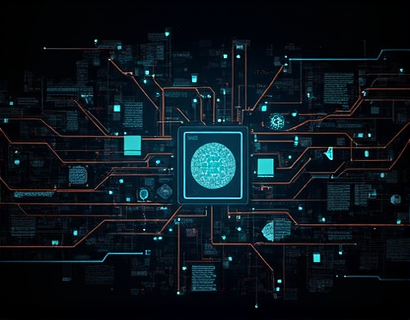AI-Driven Mental Health Guide: Empowering Professionals, Students, and Enthusiasts
The integration of artificial intelligence in mental health services has opened new avenues for providing specialized insights and support to a diverse audience. An AI-powered chatbot designed for professionals, students, and enthusiasts offers a unique platform to explore mental health services and industry trends. This chatbot is tailored to deliver accurate and safe content, ensuring a secure and engaging environment for users of all ages, including children and students.
Understanding the Need for AI in Mental Health
The mental health landscape is complex and ever-evolving, with a growing demand for accessible and reliable information. Traditional methods of seeking mental health support can be daunting, especially for those who are new to the topic or feel stigmatized. AI-driven chatbots bridge this gap by providing immediate, personalized, and evidence-based information. These chatbots can handle a wide range of inquiries, from basic mental health facts to detailed insights into professional services and industry trends.
Specialized Insights for Professionals
Healthcare professionals, including psychologists, psychiatrists, and counselors, can benefit significantly from an AI chatbot. These professionals often need up-to-date information on the latest research, treatment methodologies, and industry standards. The chatbot can provide detailed summaries of recent studies, highlight emerging trends, and offer best practices in mental health care. For instance, it can discuss the efficacy of different therapeutic approaches, such as cognitive-behavioral therapy (CBT) and dialectical behavior therapy (DBT), and provide case studies for practical application.
Resources for Students and Educators
Students and educators play a crucial role in promoting mental health awareness and providing support within educational settings. The chatbot can offer resources tailored to their needs, such as lesson plans, educational materials, and tips for recognizing and addressing mental health issues among peers. For students, it can provide information on managing stress, anxiety, and depression, along with guidance on where to seek help. Educators can find insights into creating supportive classroom environments and integrating mental health education into their curricula.
Engaging Content for Mental Health Enthusiasts
Mental health enthusiasts, including parents and community members, can also benefit from the chatbot's resources. These individuals often seek to deepen their understanding of mental health topics and support loved ones. The chatbot can offer articles, videos, and interactive content that explain mental health conditions, treatment options, and self-care strategies. It can also provide guidance on how to foster open conversations about mental health within families and communities.
Ensuring Content Verification and Safety
One of the key features of this AI chatbot is its commitment to content verification. All information provided is cross-referenced with credible sources, ensuring accuracy and reliability. This is particularly important for sensitive topics like mental health, where misinformation can have serious consequences. The chatbot is designed to filter out any potentially harmful or unethical content, making it a safe resource for users of all ages. For children and students, the chatbot uses age-appropriate language and avoids complex jargon, ensuring that the content is accessible and understandable.
Interactive and Personalized Experience
The chatbot uses natural language processing (NLP) to understand and respond to user queries in a conversational manner. This interactive approach makes the experience more engaging and personalized. Users can ask follow-up questions, seek clarification, and explore related topics with ease. The chatbot can also remember previous interactions, providing a seamless and continuous flow of information. For example, a user interested in CBT can receive a series of questions to assess their specific needs and then be directed to relevant resources and articles.
Supporting Children and Adolescents
Mental health issues among children and adolescents are on the rise, making it crucial to provide age-appropriate resources. The chatbot includes a child-friendly version that uses simple language and engaging visuals to explain mental health concepts. It can address common concerns such as bullying, exam stress, and social anxiety, offering coping strategies and encouraging users to seek help from trusted adults. For older adolescents, the chatbot can delve into more complex topics like identity formation, peer pressure, and the impact of social media on mental well-being.
Building a Community of Support
Beyond providing individual resources, the chatbot fosters a sense of community among users. It can connect individuals with support groups, forums, and local mental health services. This community aspect is particularly beneficial for those who feel isolated or hesitant to seek help. Users can share their experiences, offer support to others, and find a network of like-minded individuals. The chatbot can also facilitate connections with mental health professionals for virtual consultations or therapy sessions.
Enhancing Professional Development
For healthcare professionals, the chatbot serves as a valuable tool for ongoing education and professional development. It can provide access to webinars, workshops, and continuing education courses focused on mental health. Professionals can stay updated on new research, treatment protocols, and policy changes. The chatbot can also help in networking with peers, sharing best practices, and collaborating on research projects. This continuous learning environment ensures that professionals are well-equipped to provide the best possible care to their patients.
Addressing Stigma and Promoting Awareness
Stigma remains a significant barrier to seeking mental health support. The chatbot plays a crucial role in breaking down these barriers by promoting awareness and understanding. It can share personal stories, debunk myths, and highlight the importance of mental health care. By normalizing conversations about mental health, the chatbot encourages users to prioritize their well-being and seek help when needed. This is especially important for young people, who are often more susceptible to the negative impacts of stigma.
Technological Innovations in Mental Health
The integration of AI in mental health services is just one part of a broader technological revolution in the field. Other innovations, such as teletherapy, mobile apps, and wearable devices, are transforming how mental health care is delivered. The chatbot can integrate with these technologies to provide a comprehensive support system. For example, it can remind users to take medication, track mood patterns, and provide real-time coping strategies based on their input. This holistic approach ensures that users have access to a wide range of tools and resources to manage their mental health effectively.
Conclusion
The AI-driven chatbot represents a significant advancement in mental health support, offering specialized insights and resources to a diverse audience. By ensuring content verification, providing a safe and engaging environment, and fostering a community of support, the chatbot empowers individuals to take control of their mental health. Whether you are a professional seeking the latest research, a student learning about mental health, or an enthusiast looking to deepen your knowledge, this chatbot is a valuable resource. As technology continues to evolve, the potential for AI to enhance mental health care is vast, promising a brighter and more supportive future for all.










































